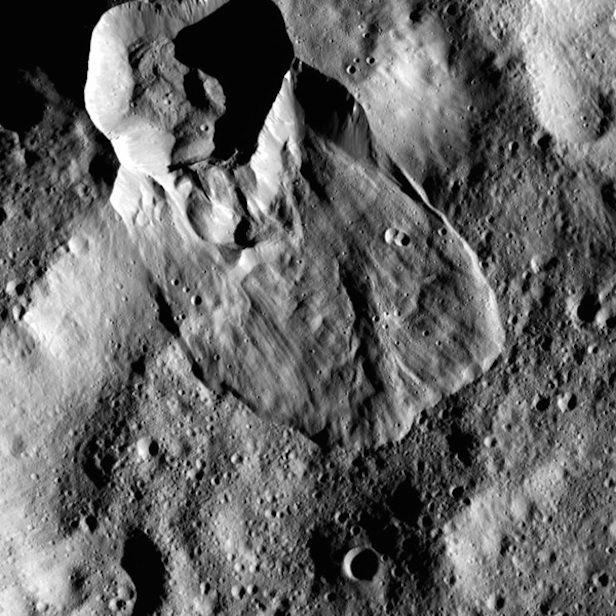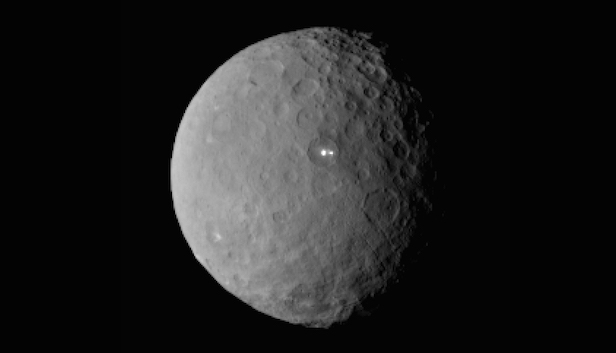Astronomers discover hidden ice during landslides on dwarf planet
Massive landslides, similar to those found on Earth, are occurring on Ceres
Massive landslides, similar to those found on Earth, are occurring on the dwarf planet Ceres. That’s according to a new study led by the Georgia Institute of Technology, adding to the growing evidence that Ceres retains a significant amount of water ice.
The study used data from NASA’s Dawn spacecraft to identify three different types of landslides, or flow features, on the Texas-sized world.
Type I are relatively round, large and have thick ‘toes’ at their ends. They look similar to rock glaciers and icy landslides in Earth’s arctic. Type I landslides are mostly found at high latitudes, which is also where the most ice is thought to reside near Ceres’ surface.
Type II features are the most common of Ceres’ landslides and look similar to deposits left by avalanches on Earth. They are thinner and longer than Type I and found at mid-latitudes. The authors affectionately call one such Type II landslide ‘Bart’ because of its resemblance to the elongated head of Bart Simpson from TV’s The Simpsons.
Ceres’ Type III features appear to form when some of the ice is melted during impact events. These landslides at low latitudes are always found coming from large-impact craters.
Georgia Tech Assistant Professor and Dawn Science Team Associate Britney Schmidt led the study. She believes it provides more proof that the dwarf planet’s shallow subsurface is a mixture of rock and ice.

An image of the Type I landslide on Ceres, taken by the Dawn Framing Camera.
NASA/JPL-Caltech/UCLA/MPS/DLR/IDA
“Landslides cover more area in the poles than at the equator, but most surface processes generally don’t care about latitude,” says Schmidt, a faculty member in the School of Earth and Atmospheric Sciences. “That’s one reason why we think it’s ice affecting the flow processes. There’s no other good way to explain why the poles have huge, thick landslides; mid-latitudes have a mixture of sheeted and thick landslides; and low latitudes have just a few.”
The study’s researchers were surprised at just how many landslides Ceres has in general. About 20 per cent to 30 per cent of craters greater than 10 kilometres (6 miles) wide have some type of landslide associated with them. Such widespread features formed by ‘ground ice’ processes, made possible because of a mixture of rock and ice, have only been observed before on Earth and Mars.
Based on the shape and distribution of landslides on Ceres, the scientists estimate that the upper layers of Ceres may range from 10 per cent to 50 per cent ice by volume.
“These landslides offer us the opportunity to understand what’s happening in the upper few kilometres of Ceres,” says Georgia Tech Ph.D. student Heather Chilton. “That’s a sweet spot between information about the upper meter or so provided by the GRaND (Gamma Ray and Neutron Detector (GRaND) and VIR (Visible and Infrared Spectrometer) instrument data, and the tens-of-kilometres-deep structure elucidated by crater studies.”
“It’s just kind of fun that we see features on this small planet that remind us of those on the big planets, like Earth and Mars,” Schmidt says. “It seems more and more that Ceres is our innermost icy world.”
Keep up to date with the latest space news in All About Space – available every month for just £4.99. Alternatively you can subscribe here for a fraction of the price!





